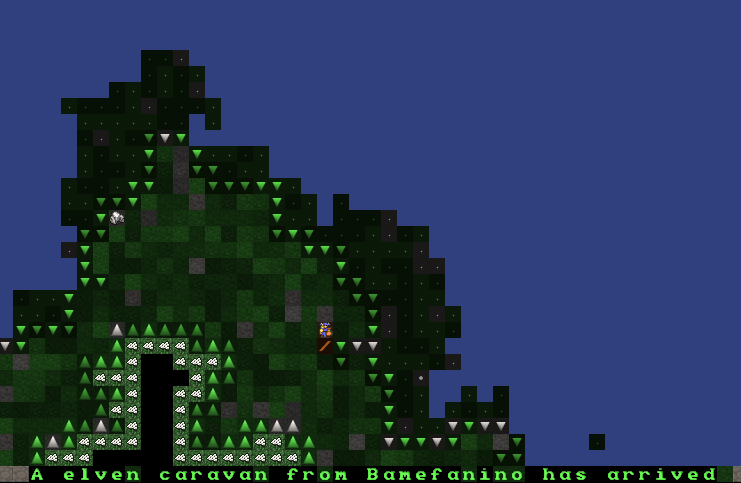


Dwarf Fortress Interview on PC Gamer
This post is mostly an excuse to link to the recent interview PC Gamer did with the elusive Tarn Adams, but it’s not like I ever have a shortage of stuff to talk about when it comes to Dwarf Fortress.
I’ve talked about the history embedded in the simulation, and the new mythology generation, so let’s focus on something else in the interview: the popular bugs.
While procedural generation doesn’t strictly require emergence, designing modular content that combines in emergent ways is a powerful way to get more out of procedural generation, so it does come up a lot.
Bugs are where the emergence escapes the intentions of the designer. Sometimes this breaks the game and makes it less interesting; a dominant choice that unbalances the system. But many bugs reveal unexpected connections. The drunk cats in Dwarf Fortress and the way the ball-and-chain enables the solo eggplant run in Spelunky both reveal something about the system that the designers were unaware of.
I think emergent bugs are related to what the Oulipo group referred to as the clinamen. The Oulipoians did a lot with the automatic generation of text, but in writing to a strict set of constraints they had a philosophical problem: because they were using a deterministic, mechanical process, how do you reconcile that with the creative act of the artist?
Enter the clinamen: a swerve that creates free will within the otherwise entirely deterministic system.
In the case of Georges Perec, it was an imperfect knights-tour of the 10x10 building in Life, a User’s Manual that skipped one square. In Dwarf Fortress it’s death-by-carp, cats getting drunk, and all of the other emergent effects that Tarn Adams regularly reports in his development log.
http://www.pcgamer.com/dwarf-fortress-creator-on-how-hes-42-towards-simulating-existence/
